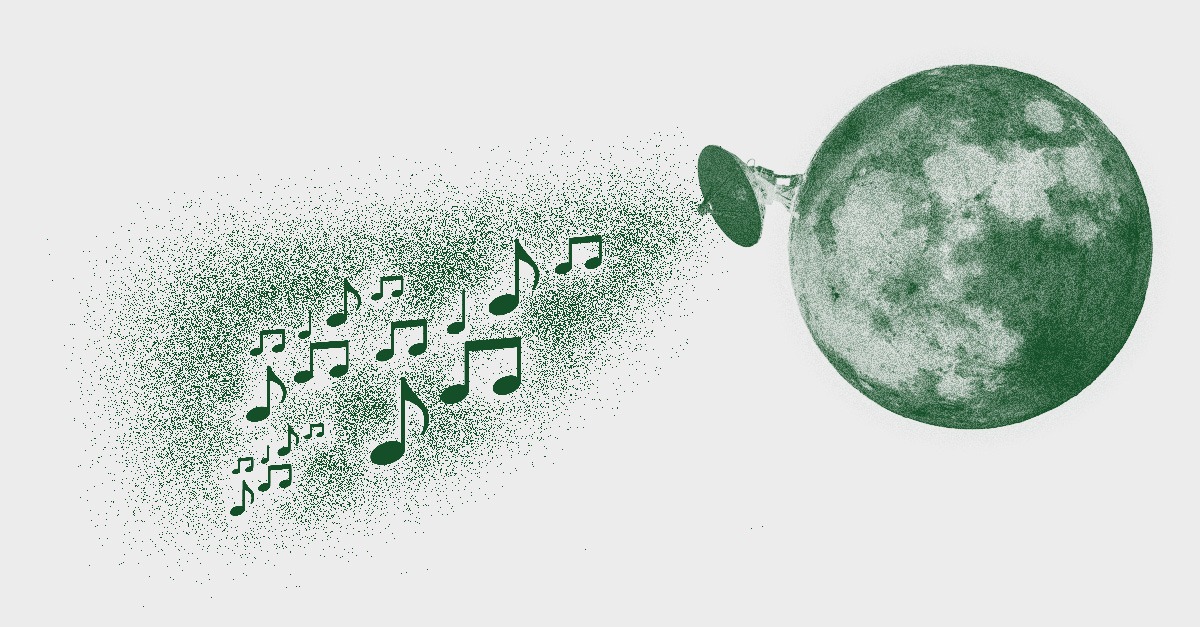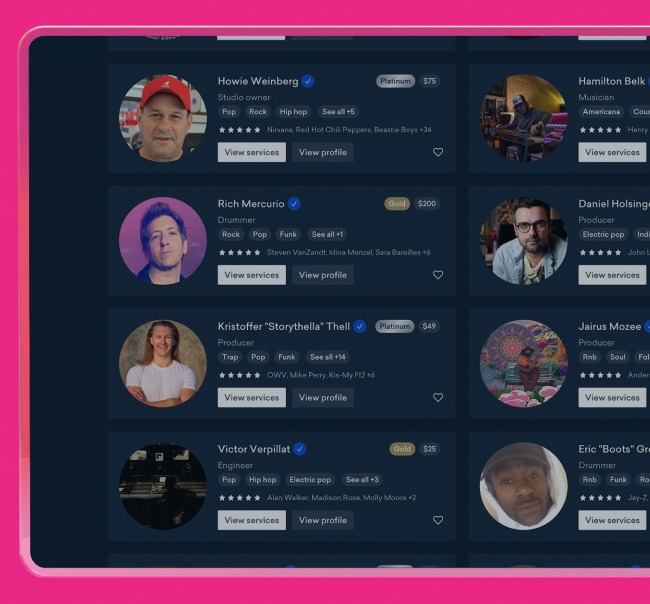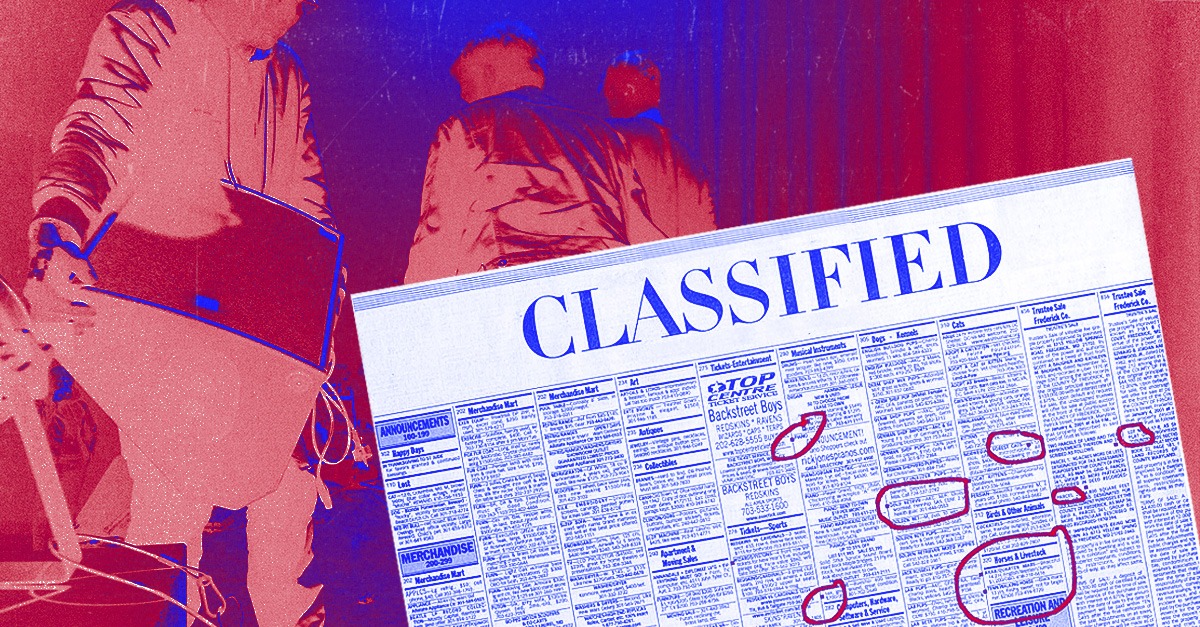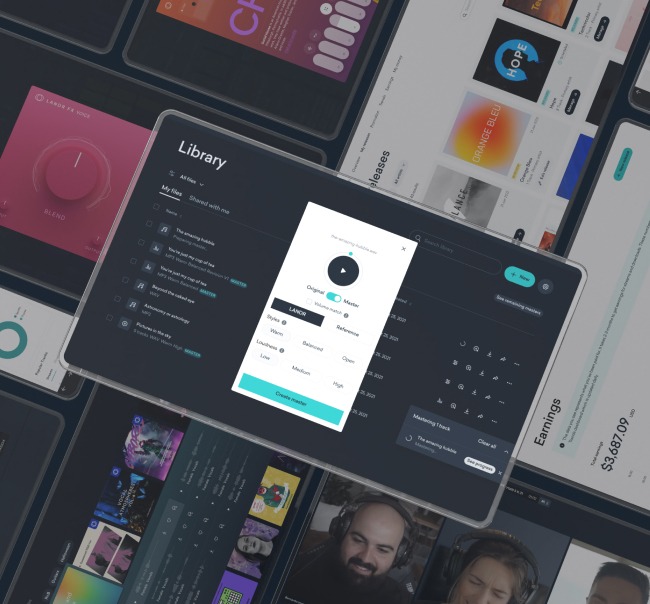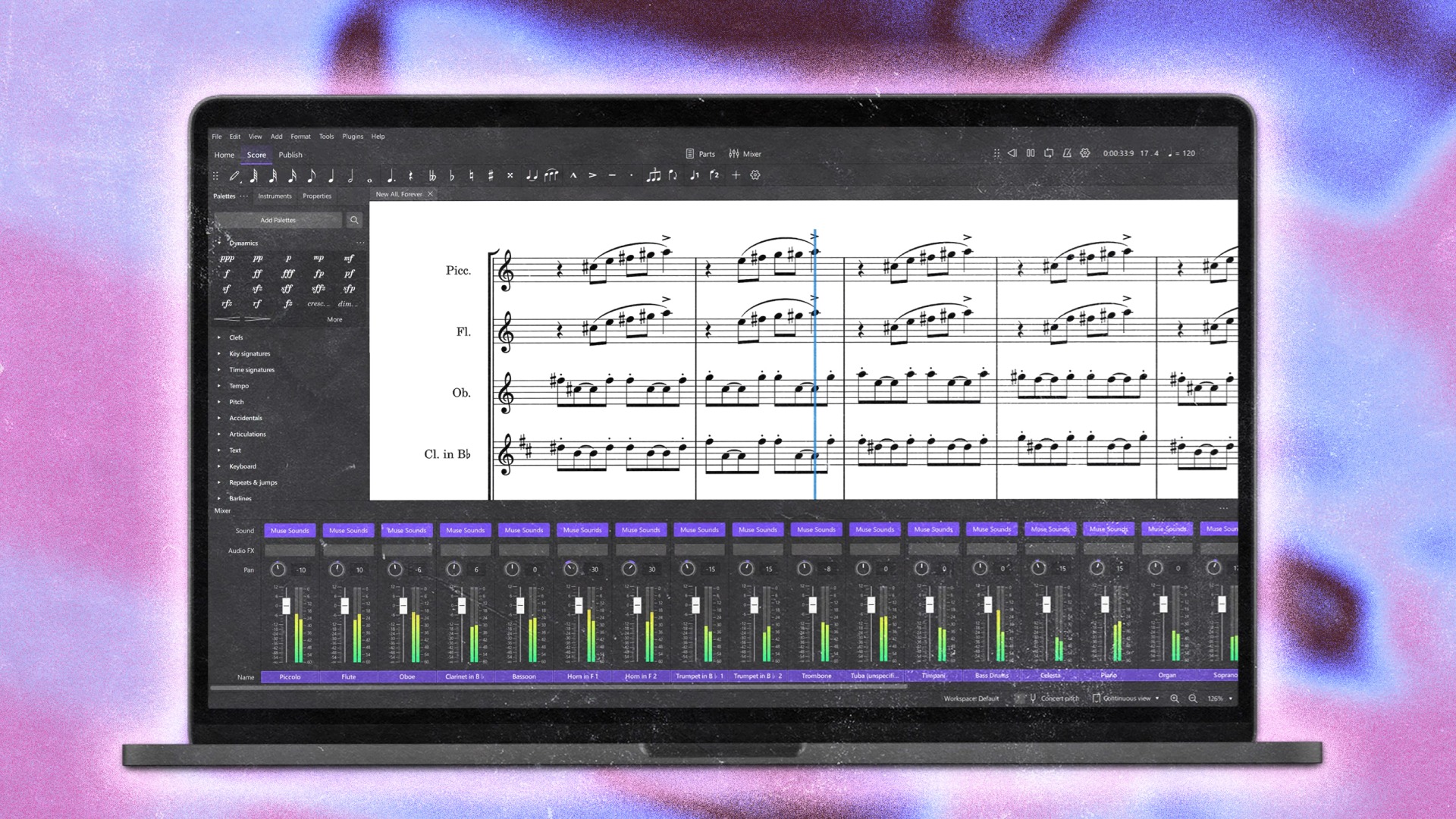
Music Portfolio: How to Present Your Music Online
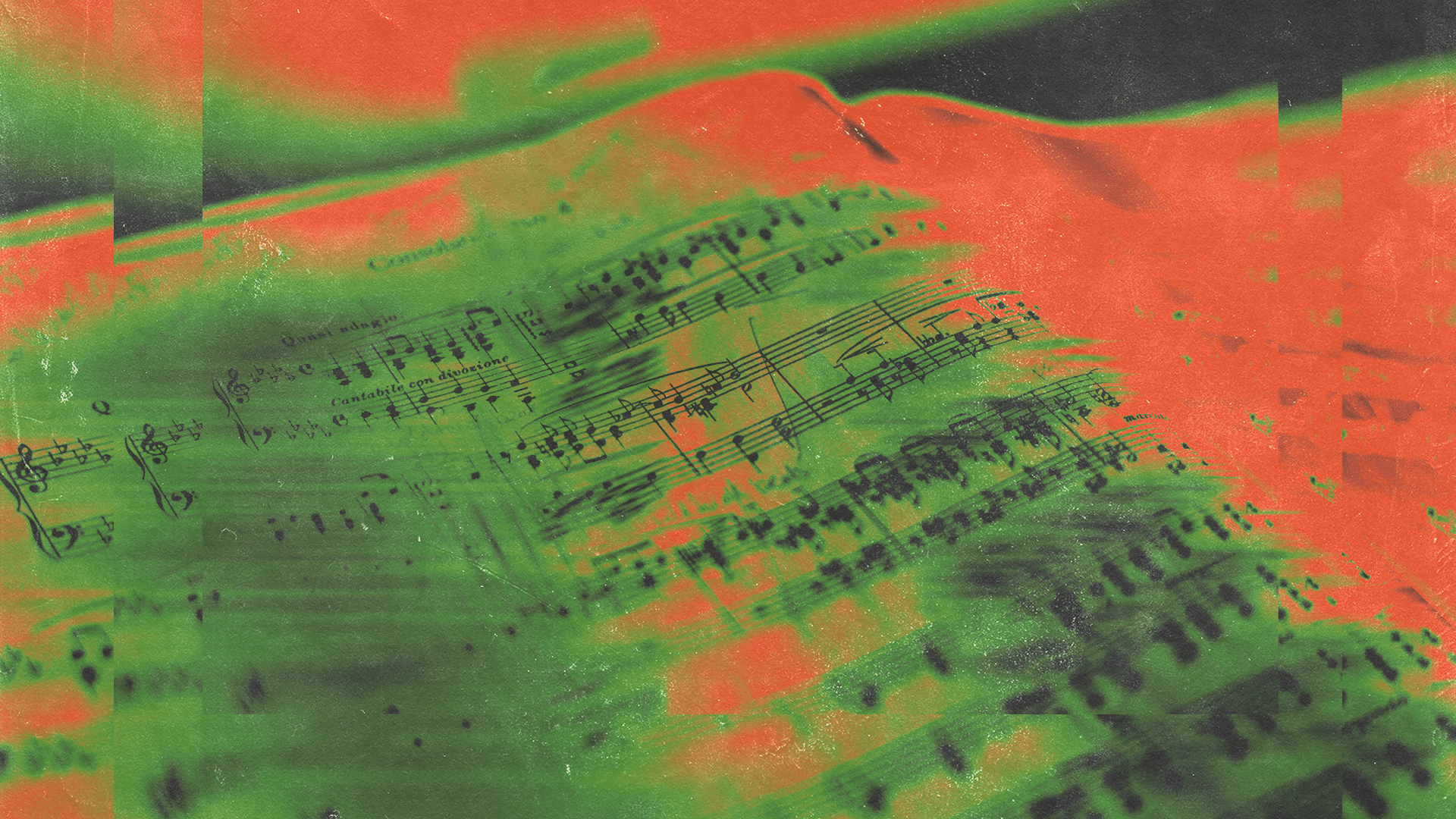
Like any kind of artist, a musician needs to showcase their work. In this case it’s with a music portfolio.
So, what’s the best way to present your music online and increase your chances of getting gigs?
We’re going to run through some simple yet essential tips so that you can build a music portfolio that gets the job done.
Table of Contents
- Why do you need a music portfolio?
- Take the right approach for your music
- Choose the right music portfolio platform
- Know the music portfolio essentials
- Consider a video demo reel
- Showcase the right work
- Keep it all updated and well-organized
- Highlight your collaborative ability
- Don’t rely on your music portfolio alone
Why do you need a music portfolio?
If you’re a session musician, instrumentalist, studio engineer, or composer, a music portfolio is a must-have.
It will both showcase the quality of your work and convey a strong sense of professionalism.
People don’t just want to hire musicians and engineers with skills, they want to hire people who they can trust to take the job seriously.
If you don’t have a strong portfolio, you’ll certainly struggle to compete with those who do.
Music portfolios are also essential for applying to college and university music programs.
The more developed and presentable your portfolio is, the better a chance you have at making a good impression when submitting your application.
Take the right approach for your music
The way you approach and present your music portfolio can vary stylistically depending on what you do.
A professional violinist’s music portfolio may have a different look and feel than the music portfolio of a studio engineer, for example.
This is why it’s a good idea to look at the websites and portfolios of other music professionals who provide the same service as you.
This can offer you some inspiration as to what expectations you should meet and what conventions you might need to follow.
Not all tips we give here will be relevant for all music professionals, so as always, be sure to keep common sense in mind (a studio engineer, for example, definitely doesn’t need a video demo reel).
Choose the right music portfolio platform
If you want a truly thorough strategy for presenting your music online, we recommend covering all the bases.
You should have a website, profiles on social media, a LinkedIn profile, and a profile on a music professional network.
Options for music portfolio website builders include:
Your music portfolio itself should, of course, reside on your website, which you can link to from social media.
Meanwhile, the advantage of having a presence on a music-specific professional network is that you can present your work, gain new clients, and develop a good reputation in the same place.
We built LANDR Network for exactly this reason, so we highly recommend checking it out.
Know the music portfolio essentials
There are a few criteria and components that pretty much any music portfolio needs to have covered.
Professional-quality photos of you are essential for conveying a strong sense of legitimacy.
A well-written bio will do the same, in addition to summarizing your experience and even your creative philosophy.
Audio samples are, obviously, a no-brainer. This can be done in a number of ways, including an embedded player from your SoundCloud profile.
A list of credits, and/or a list of important past gigs will take stock of the work you’ve gotten so far and add to your reputability.
And, of course, you should have your contact information — including links to your social media and professional network profiles — plainly visible.
Some other music portfolio elements are only necessary in certain cases, depending on your profession.
For example, an electronic press kit may not be relevant, but it can be a major asset if it does apply.
A good rule of thumb is that if you have a decent amount of press coverage that mentions you positively by name, you might as well have an EPK on your music portfolio site.
If you have releases on streaming platforms as a solo artist, you can embed your best work via Spotify or Apple Music.
Consider a video demo reel
As we mentioned, audio is a no-brainer, but you should also consider including video content in your music portfolio.
Videos of this kind are often called demo reels, and they’re typically most relevant to instrumentalists and session musicians.
Reels can be a very useful way to present yourself that compliments and supports your audio demos.
Your demo reel should be short and effective, running no longer than 5 minutes.
Ideally, it will showcase your ability to play in a wide range of styles and contexts in order to convey both skill and versatility.
If you don’t have many pre-existing clips of you playing, it may be a good idea to create a homemade reel from the ground up.
This can be a compilation of homemade recordings that show you playing in accompaniment to a variety of material.
Showcase the right work
How you select the material that you’re highlighting in your music portfolio is a huge factor in its effectiveness.
In a nutshell, it’s all about a balance between showcasing your most recent work and your best work.
Your music portfolio shouldn’t simply be a stream of the latest things you’ve done (this is what your social media profiles are for).
Instead, focus on work you’ve done with well-known artists or groups and work that fully displays your skillset.
It can also be a good idea to get input from friends or other musicians about what recordings of yours are strongest.
Keep it all updated and well-organized
Again, balance is key — it’s of the utmost importance to keep your music portfolio up to date.
Make a rule of cycling out the old with the new as you continue to get more gigs.
As mentioned in the previous section, an exception to this would be work you’ve done for prominent artists or groups.
You should get as much value out of those examples as possible.
The other key point here is to keep your music portfolio well-organized and easy to navigate.
Your work examples might fall under different gig categories (session work, solo work, and composition for example) or different genre categories.
If they do, then you should present your portfolio in a structure that reflects this.
This will make it easier for potential clients to identify how suitable you are for their needs.
Highlight your collaborative ability
Like any artist, it’s possible that you have a strong sense of your own individual creative vision and style.
While you should definitely let this show through in your portfolio (including your bio), we highly recommend balancing this with a strong sense of collaborative energy.
You should both showcase collaborative work you’ve done and be vocal about your appreciation for creative collaboration.
Your bio, your descriptions of your past work, and your social media profiles are all great places to put this attitude on display.
This combination of skill and class can really set you apart from the competition.
And, of course, it can lead you to genuinely great collaborative experiences as an artist.
Don’t rely on your music portfolio alone
As powerful as a music portfolio can be for helping you get gigs, it won’t do all the work for you.
The other (and often even more important) part of the equation is making connections and building relationships.
People who need a reliable and skilled musician to get the job done will often ask people they trust for recommendations.
The more you broaden your network, the more presence you can have when it comes to word-of-mouth.
This also adds to the importance of developing your collaboration skills — they can be just as valued as your musical skills themselves.
Crafting an impressive image for yourself online will certainly serve you well, but music is still a business of relationships.
So put yourself out there, create a great portfolio, and make some great things happen!
Gear guides, tips, tutorials, inspiration and more—delivered weekly.
Keep up with the LANDR Blog.
